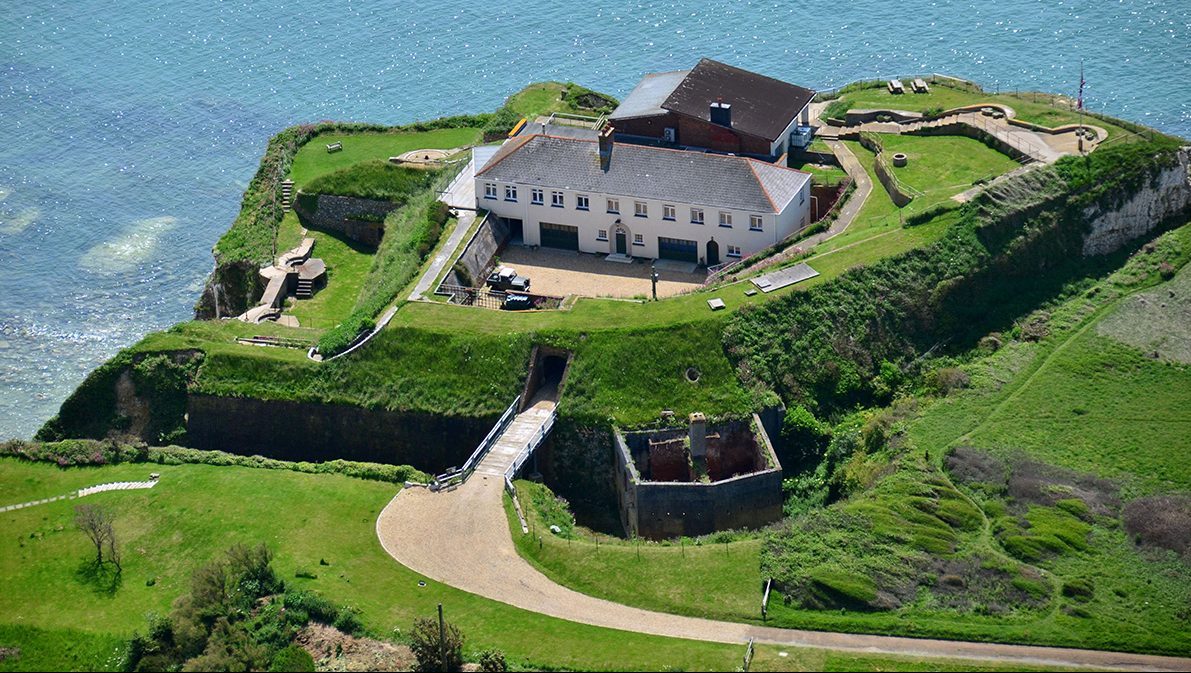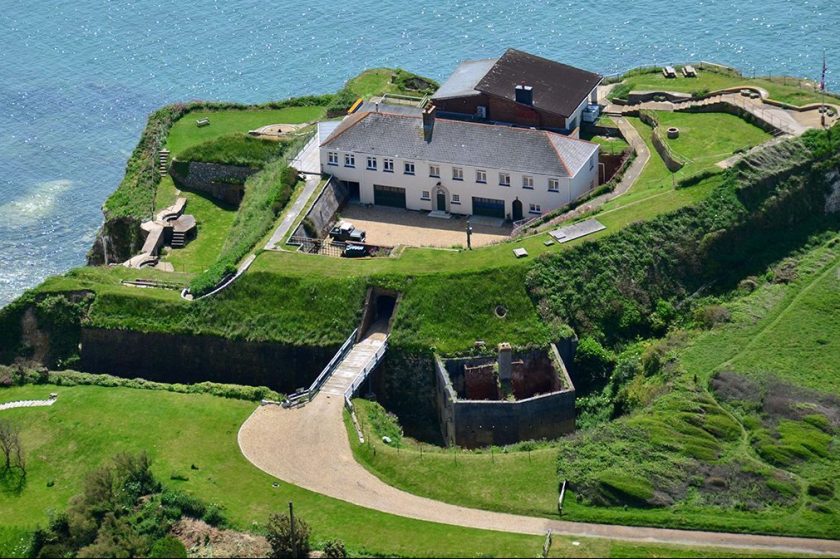
Security won’t be a problem with this fortified property—a 160-year-old former fort built to defend the Isle of Wight from the threat of the oncoming French Navy.
The once-functional military building is now a beautiful home perched on a cliff with one of Britain’s best coastal views. The fort still has its old ramparts, tunnels, and gun emplacements—as well as a helicopter landing pad and its own beach which is only accessible by boat or at low tide.
The house, which can be an eight-bedroom home or divided up into several smaller properties, is now on the market with Biles and Co. for $3.7 million.
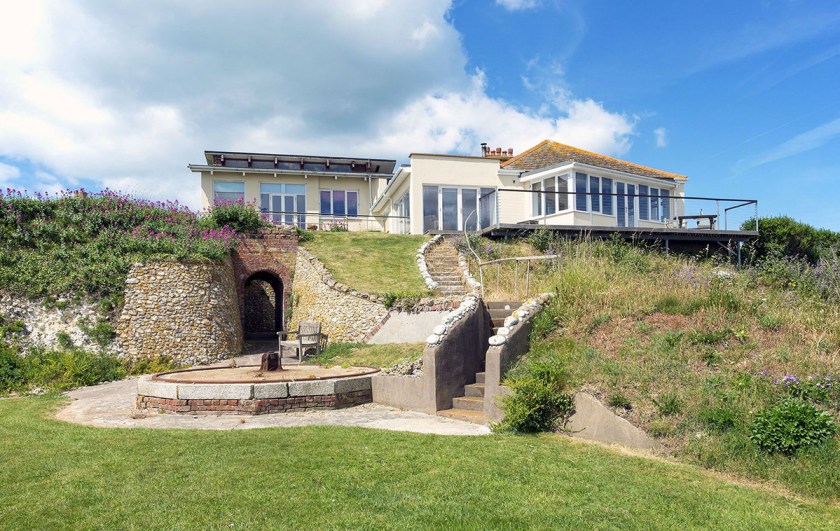
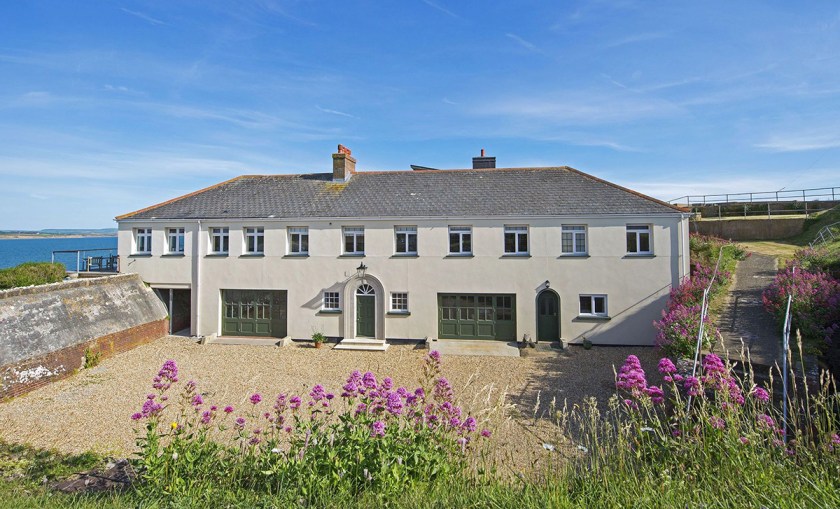
Known as Fort Redoubt, it was built in 1855-56 to protect Freshwater Bay on the western end of the island, which was a possible landing beach for enemy troops to attack the Needles Battery.
The cliff was, and still is, too steep to climb and the north and west sides were protected by a deep, dry, brick-walled moat, which is still visible.
It was one of many Palmerston forts built under Prime Minister Lord Palmerston during the Victorian period as a response to the threat of possible invasion by the French under Emperor Louis Napoleon.
But the threat evaporated when the French were defeated in the Franco-Prussian War of 1870, and the forts became largely obsolete.
They were the most costly and extensive system of fixed defenses undertaken in Britain during peacetime.
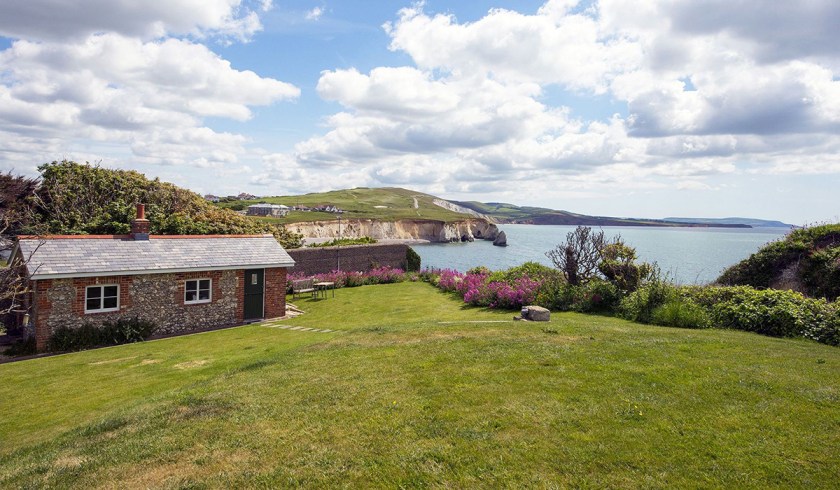
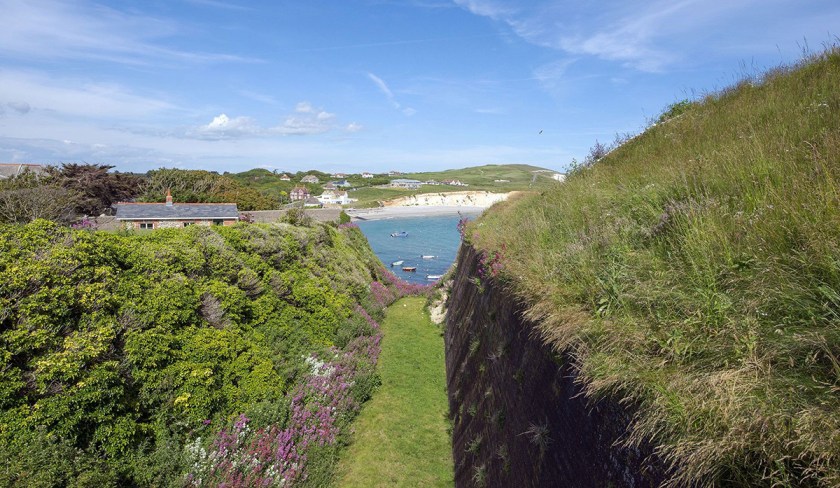
In 1861, Queen Victoria and her four-year-old daughter Princess Beatrice, who lived in Osborne House in nearby East Cowes, visited Freshwater Redoubt, after they were invited by the wife of Colonel R.B. McCrea, Royal Artillery.
And it is rumored that poet laureate Alfred Lord Tennyson, who moved to Farringford House in Freshwater in 1853, was inspired by hearing guns test firing at the fort when he wrote his most famous poem, “The Charge of the Light Brigade in 1854.”
This fort was designed with an upper battery facing the sea and a lower battery that covered Freshwater Bay and a total of seven guns.
The upper battery became instructional for the School of Gunnery at nearby Golden Hill Fort. A gun exploded there in 1901, killing an officer and three men.
During World War I, it was manned against attacks from German raiding parties before being decommissioned in 1918 and sold by the army in 1928.
It was converted into a two-story private residence in 1936 and was used by the owner as a summer retreat. It even had a swimming pool in the fort’s water tank.
The Home Guard kept watch from the fort during World War II, and it operated as a tea room from 1977 until the 1990s.
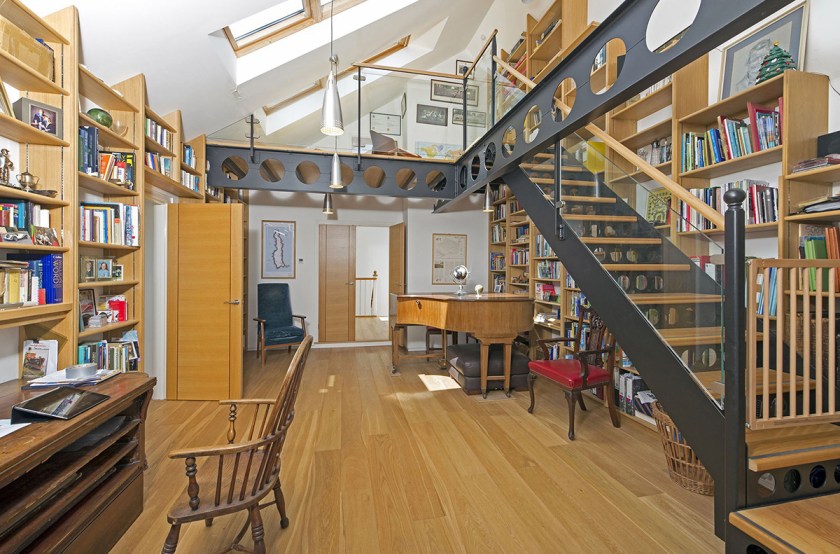
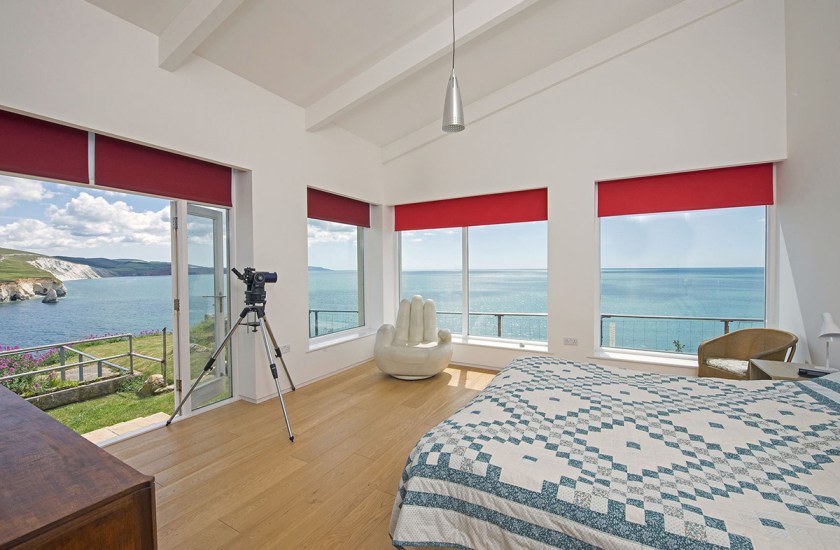
The Grade II listed house is currently divided with a main house, which has a stunning triple-aspect living room and a large open split-level room called the Sea Lounge, and three bedrooms; an upper apartment, which is an adjoining three-bedroom apartment; and a lower annex, which has two bedrooms and its own front door.
It comes with three acres of grounds and includes a separate one-bedroom holiday cottage called Moonfleet, which was originally the married quarters for the master gunner.
Peter White stayed at the fort in 2005 and wrote Moonfleet the opera, based on the novel of the same name about smuggling by J. Meade Falkner.
There is also the Caponier—a two-story 1850s building which served as barracks for 24 men with planning permission to be turned into two apartments—and the Casemates, eight arched store rooms around the courtyard.
For more information on the property, click here. —Rex Features
This article was featured in the InsideHook newsletter. Sign up now.
